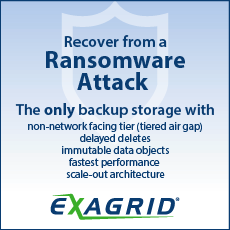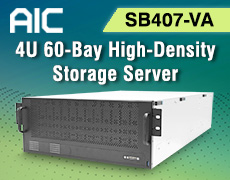Seagate: Availability of Exos M and IronWolf Pro Up to 30TB 3.5-Inch SATA 6Gb HDDs
$600 (30TB) and $570 (28TB) for Exos M and IronWolf Pro HDDs
This is a Press Release edited by StorageNewsletter.com on July 17, 2025 at 2:02 pmSeagate Technology Holdings plc announced the global channel availability of up to 30TB Exos M and IronWolf Pro 3.5-inch HDDs.
Built on the company’s Mozaic 3+ platform and powered by HAMR technology, these drives are engineered to meet increasing demand for scalable, high-performance storage driven by the rise of AI deployments that are supplementing traditional enterprise infrastructure development. With over 1 million Mozaic hard drives now shipped, Seagate has reached more than just a milestone – it has marked a defining moment that underscores the strength and maturity of its breakthrough storage technology.
“Today, approximately 90% of the world’s data is stored in just 10 countries. However, data gravity is increasingly pulling networks to the edge as nearly 150 countries adopt data sovereignty requirements, and AI workloads continue to expand. Datacenters – on-prem, private, and sovereign – are leveraging AI to unlock the value of their proprietary data,” said Melyssa Banda, SVP, edge storage and services, Seagate. “Our 30TB drives are designed to support these rapidly growing trends, delivering the capacity, efficiency, and resilience needed to power the AI workloads.”
Industry leaders are aligning around the fundamental data management and infrastructure shifts:
“Hyperscalers and enterprise data centers are in the early stages of an all-out arms race to develop AI infrastructure resulting in rapidly increasing capex spending on performance-oriented hardware,” said Ed Burns, research director, hard disk drive and storage technologies, IDC. “While not often associated with performance such as low latency, the highest capacity HDDs are a critical strategic asset in the AI development process, filling the need for mass capacity storage of the foundational data essential to building and improving the highest quality AI models in the market today and into the future. Enterprise customers are seeking ways to improve the density of their data centers, lowering power consumption and square footage requirements while ensuring storage continues to meet strategic requirements, and Seagate’s new 30TB Exos product is the highest density hard drive offered in the industry today. Hyperscale and enterprise data center customers looking for optimal performance and cost tradeoffs for mass-capacity storage will benefit from Seagate’s HAMR product roadmap, which is poised to accelerate areal density growth rates for HDDs in the years to come.”
-
HPE forecasts the on-prem AI market will grow at a 90% CAGR, reaching $42 billion within three years. (1)
-
NVIDIA describes AI factories as ‘data centers reimagined to manufacture intelligence at scale,’ essential for transforming data into real-time insights across the AI lifecycle. (2)
As AI becomes central to business strategy, modernizing storage is not optional – it’s foundational.
30TB Hyperscale-Grade Exos and NAS-Optimized IronWolf Pro Arrive Just in Time for On-Prem AI

Edge AI is no longer a future concept – it’s happening now. According to IDC, industries such as retail, manufacturing, and financial services are actively deploying AI at the edge for video analytics, predictive maintenance, and fraud detection. This shift is accelerating the adoption of disaggregated storage architectures, which decouple compute from storage to enable more flexible, scalable infrastructure.
The firm’s Exos M 30TB drive is built to meet increased demand for high-capacity, energy-efficient storage – empowering organizations to scale storage, optimize data placement, and support real-time edge analytics without compromising performance or sustainability.
As AI-powered applications proliferate, on-premise NAS systems are evolving into intelligent data hubs – supporting advanced workloads such as video analytics, image recognition, retrieval-augmented generation (RAG), and inferencing at the edge. The convergence of AI, IoT, and hybrid cloud is fueling demand for high-capacity, high-integrity NAS solutions that can manage large, unstructured datasets with low latency and high throughput.
Recent market analysis projects the global NAS market to grow at a CAGR of over 17% through 2034, driven by digital transformation and the rise of AI and big data analytics. (3)
“QNAP NAS systems are increasingly used for on-premise AI workloads – enabling enterprises to run local AI models and leverage RAG and LLM technologies to process and analyze local datasets,” said Dhaval Panara, product manager, QNAP Systems, Inc. “By integrating Seagate’s IronWolf Pro 30TB drives, we deliver petabyte-scale, high-integrity storage that ensures fast access, reliable performance, and scalable infrastructure at the edge.”
“With AI workloads increasingly moving to edge environments, reliable high-capacity storage becomes critical for local data processing. Seagate’s IronWolf Pro 30TB drives provide the robust foundation Ugreen NAS systems require – delivering massive scalability and the operational stability needed for local AI applications,” said Evan Li, head, international business, Ugreen Group Ltd.
Availability:
The Exos M 30TB and 28TB and IronWolf Pro 30TB and 28TB drives are available through the company’s online store as well as the firm’s authorized resellers and channel partners WW.
Pricing: $599.99 – Exos M and IronWolf Pro 30TB; $569.99 – Exos M and IronWolf Pro 28TB
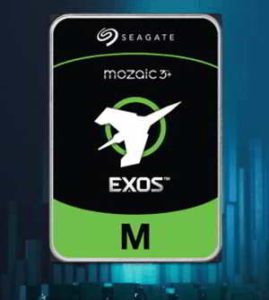
Click to enlarge
Click to enlarge
(1) HPE and NVIDIA: A partnership driving the next generation of AI innovation | HPE
(2) Data Center Solutions: AI Factories | NVIDIA
(3) Network Attached Storage (NAS) Market – By Architecture, By Design, By Deployment Model, By Application & Forecast, 2025 – 2034
Comments
This a recurrent question or a classic game between a full-flash team promoting one horizontal approach and the other one, existing for several decades, with hierarchical storage model in mind with flash. HDD and even tape. And you find believers everywhere having their own arguments.
And this is important, let's consider just a few facts:
- All of these technologies, Flash/SSD, HDD and tape are mature and well mastered, deployed and adopted, no doubt.
- We're all users of flash, we were users of HDD and some continue to be and part of us use(d) tape.
- Cost is an important dimension especially at scale and we can say that enterprises and especially large storage footprint users target $/TB as the premier metric. Today tape offers the best ratio followed by HDD and then SSD.
- Capacity is largely in favor of SSD with 120+TB and soon 240-250TB par SSD. Imagine that just 4 SSDs will represent 1PB when 4 HDDs are needed per 120TB SSD. You get the idea in terms of rack footprint. I remember seeing a 2U chassis from Huawei, the OceanStor Pacific 9928 I think, with 36 SSDs of 61.44TB so 2PB raw and soon 4PB raw with their new 122TB. The capacity battle is by far wins by Flash/SSD vendors and it will continue to diverge between these worlds. The capacity advantage HDD and tape had in the past completely disappeared. Of course, you can select SMR HDD and you can get get approximately 20% more capacity but this gain is marginal when we see the SSD capacity doubling every year with the last product iterations in mind. FMS should be the place where some vendors will shake the industry on that dimension again. You read recently the LTO-10 announcement, it is great for the industry but again, the roadmap was not delivered. The industry has made great progress on this with, first, a standard and, second, 300x capacity increase in 25 years as the LTO-1 had 100GB in 2000. One of the key metric here is TB/unit and TB/U we should say now PB/U.
- Performance is where Flash/SSD are unique delivering at the same time low latency, high IOPS and high throughput where tape are good for streaming and HDD for throughput as well for some workloads while being poor in IOPS.
- Energy and power consumption are critical, again at scale, or over a long period of time if you need to maintain up and running your storage array. For that, tape as a passive media is the winner but for production data or primary storage, HDD or SDD are chosen and the energy question is by far different. A LTO-10 tape drive consumes 40W in read/write mode, this Seagate Exos M 9.5W in full mode and 25W for the last Phison D205V of 122TB for instance. So in W/TB it means 1.33 W/TB for the LTO-10 drive, 0.31 W/TB for the Seagate Exos M and 0.20 W/TB for the Phison SSD. Now the total capacity is important and we let you do your math or just pick 1PB.
Another important consideration is the complexity of all that and the addition of software, specific hardware and human talents plus investment protection that can influence seriously choices made by companies.
And we don't cover here things like active/instant archive approach, spin down model, deduplication, data redundancy, HDD and tape library hyperscaler business, AI requirements for fast IOs and many other points. Just consider this element, couple data reduction with erasure coding and power management and you'll reach an interesting result...
But the key point for all these 3 technologies is where is the demand? For which workloads, applications and use cases?








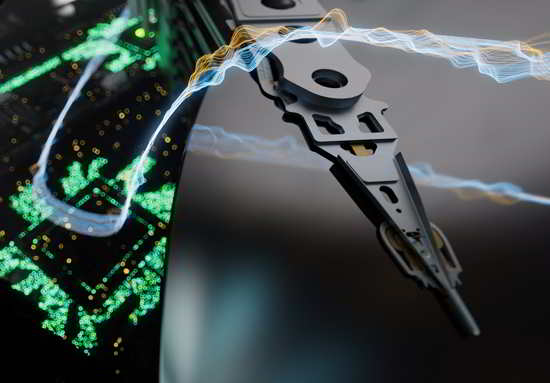
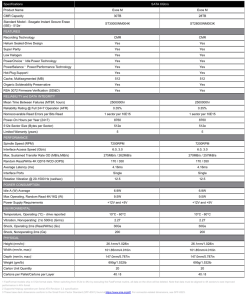
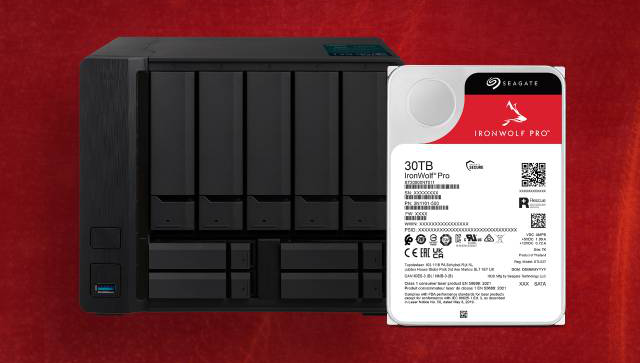
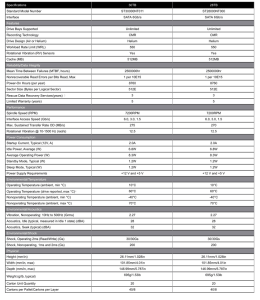






 Subscribe to our free daily newsletter
Subscribe to our free daily newsletter
